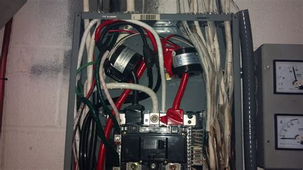Matthewpk
New Member
I'm doing a lot of reading and learning but I'm not sure what keywords to use to learn about my use case.
I have a grid tied system with no batteries today.
I'm not interested in complete grid independence.
However, my net metering isn't great. I get 15% on the exported power, and I significantly overproduce during the day, roughly 250% of daily use
This is a cabin that's usually unoccupied but has about 800w constant draw
So I'm interested in learning about how I might attach batteries to get me through the night. If the grid goes down I'm ok going down, and I'm ok exporting from batteries to grid. I'm imagining there's a way I can setup batteries to max discharge 1kw, which covers my constant usage.
When I try to search for equipment for such a setup I'm generally finding only systems with rapid switching so they go to battery if grid fails.
What should I look into? Thanks!
I have a grid tied system with no batteries today.
I'm not interested in complete grid independence.
However, my net metering isn't great. I get 15% on the exported power, and I significantly overproduce during the day, roughly 250% of daily use
This is a cabin that's usually unoccupied but has about 800w constant draw
So I'm interested in learning about how I might attach batteries to get me through the night. If the grid goes down I'm ok going down, and I'm ok exporting from batteries to grid. I'm imagining there's a way I can setup batteries to max discharge 1kw, which covers my constant usage.
When I try to search for equipment for such a setup I'm generally finding only systems with rapid switching so they go to battery if grid fails.
What should I look into? Thanks!



